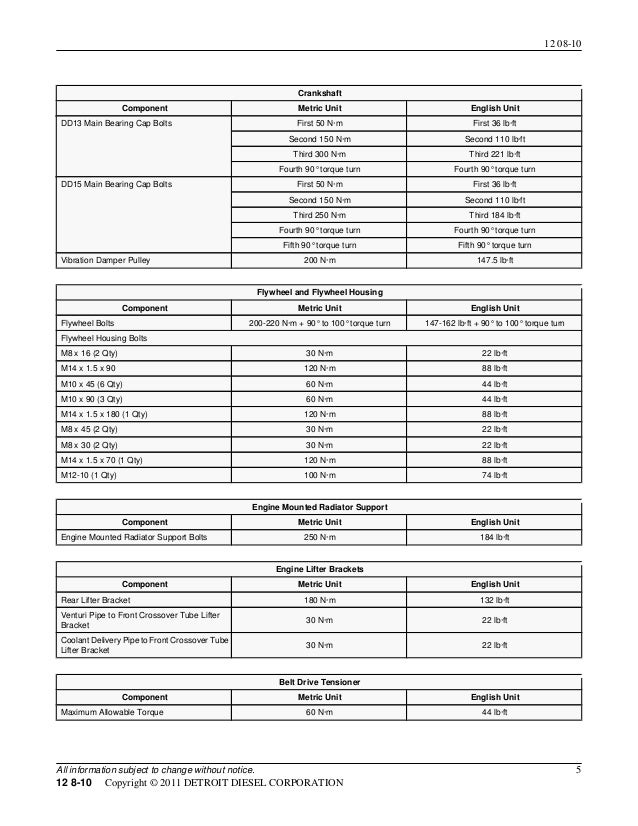Section 8.6
Coolant Leaks
Check as follows:
- Clean the engine.
- Fill the coolant system if low.
- Attach a pressure test kit.
- Pressurize the coolant system per OEM specs.
- Check for external leaks, are any leaks found?.
- If yes, repair as necessary.
- If no, check the EGR cooler for leaks. Refer to '8.6.1 EGR Cooler Leak Test' .
Section 8.6.1
EGR Cooler Leak Test

Test as follows:
Note: Before performing this procedure, turn off the engine and allow it to cool. But coolant should be warm (above 140°F/60°C).
- Remove Marmon clamps from the hot pipe and remove the pipe.
- Remove EGR mixer pipe.
- Disconnect Delta P Sensor connector.
- Disconnect Coolant Inlet Temperature Sensor connector.
- Remove the Delta P venturi pipe.
- Unbolt and move the exhaust gas crossover tube, lifting the eye to the side away from the EGR cooler.
- Install W470589019100 onto the EGR cooler. Install the hot pipe cap (2) with the supplied Marmon clamp (3) on to the hot pipe end. Install the cold pipe plug (1) into the cold pipe end and retain it with the supplied clamshell and clamp (4).
- Use regulator from kit J–41473 and apply 30 psi air pressure to the cooler. Close the valve and disconnect the air supply.
- Wait for 30 minutes and record the air gauge reading. There should be no drop in pressure. There should be bubbles in the surge tank if the cooler is leaking internally. If there is a pressure drop and there are no bubbles, use a soap and water solution to make sure that there are no leaks externally from the test kit.
- Is the cooler leaking internally?
- If yes, change the cooler. Refer to '5.1 Exhaust Gas Recirculation (EGR) Cooler' in the “Engine” chapter of the EPA07 DD15 Workshop Manual (DDC-SVC-MAN-0002).
- If no, troubleshoot for other internal coolant system leaks. Check for coolant out exhaust from an exhaust port and check for internal engine damage.
| EPA07 DD15 Troubleshooting Guide - DDC-SVC-MAN-0029 |
Aug 28, 2019 Yes; clean the venturi pipe and reinstall the sensor. No; Go to step 30. Remove the EGR cooler hot pipe, EGR crossover pipe and delivery pipe and inspect for excessive build-up or blockage. Is any excessive build-up or blockage found? Refer to section 'Removal of the Exhaust Gas Recirculation Hot Pipe'. Dd15 Engine fluctuation. Covers: Detroit DD13, DD15, DD16 GHG17 Heavy Duty Diesel Engines (2017 and newer) Pages: 1,129 Format: PDF File size: 210mb Compatibility: Windows/Mac/Tablet Notes: Instant digital download only – no printed copy or CD-ROM media. This workshop manual contains detailed inspection, testing, adjusting, disassembly/assembly and removal/installation procedures for the Detroit Diesel DD13, DD15. 4.3 installation of the dd15 and dd16 exhaust s-pipe 5.1 removal of the exhaust gas recirculation hot pipe. 8.2 installation of the exhaust gas recirculation venturi 10.1 description and operation of dd13 exhaust gas recirculation cooler water manifold assembly. This may be caused by plugged ports in the EGR Venturi Pipe. This slows down the response of the sensor but sometimes produces no codes because the unit is in Smoke Control, often for several seconds at a time. This will cause no throttle response or poor acceleration. CORRECTION: Clean the two Venturi ports and replace the Delta Pressure sensor.
| Generated on 10-13-2008 |

COMPLAINT:
Driver may experience poor acceleration and throttle response on DD engines. Code SPN 2659/FMI 1 EGR Flow Target Error Diagnostic/Low Flow may be logged, but at times no codes may be logged at all.


Venturi Pipe Design

CAUSE:
This may be caused by plugged ports in the EGR Venturi Pipe. This slows down the response of the sensor but sometimes produces no codes because the unit is in Smoke Control, often for several seconds at a time. This will cause no throttle response or poor acceleration.
Venturi Pipe Dd15 Pipe
CORRECTION:
Clean the two Venturi ports and replace the Delta Pressure sensor.